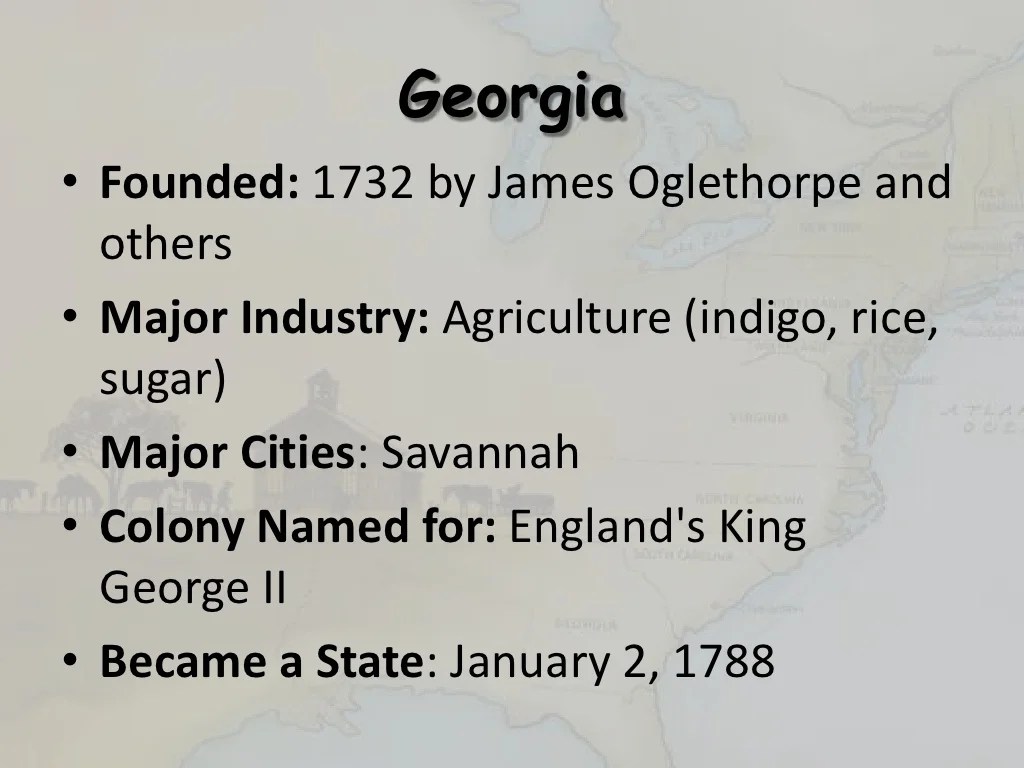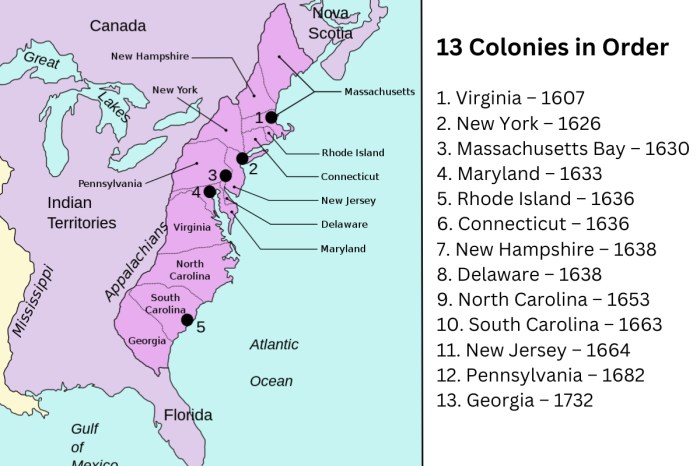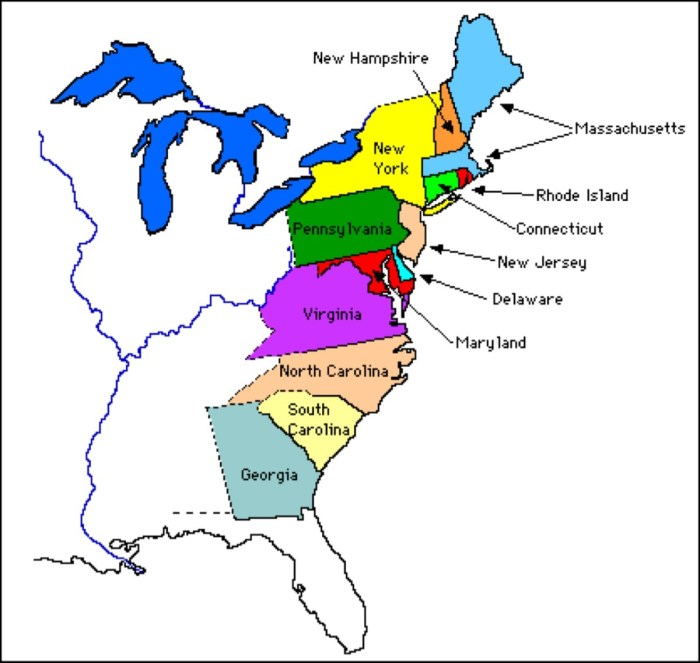Acronym for the 13 Colonies: A journey through history, significance, and cultural impact.
Acronyms have played a pivotal role in representing the 13 Colonies throughout American history. From their origins to their evolution, these acronyms have served as shorthand for a group of colonies that shaped the course of a nation.
Introduction to the 13 Colonies
The 13 Colonies, also known as the American Colonies, were a group of British colonies established on the Atlantic coast of North America during the 17th and 18th centuries. These colonies played a pivotal role in the formation of the United States of America.
The 13 Colonies were significant for several reasons. They were the birthplace of the American Revolution, which led to the Declaration of Independence in 1776. The colonies also served as a melting pot of different cultures and religions, contributing to the diverse society of the United States.
Additionally, the economic and political systems developed in the colonies laid the foundation for the American government and economy.
Geography of the 13 Colonies
The 13 Colonies were located along the Atlantic coast of North America, stretching from Maine in the north to Georgia in the south. The colonies varied in size, with Virginia being the largest and Rhode Island being the smallest. The geography of the colonies ranged from mountainous regions in the north to coastal plains in the south, providing a diverse landscape for settlement and economic development.
Acronyms for the 13 Colonies

The 13 Colonies, a group of British colonies in North America, have been referred to using various acronyms over time. These acronyms serve as convenient abbreviations for the names of the individual colonies.
One of the most well-known acronyms is -*NAM (North American Mainland), which refers to the 13 colonies located on the mainland of North America. Other acronyms include -*BMA (British Mainland America), -*TNA (Thirteen North American Colonies), and -*CCA (Continental Colonies of America).
Origins and Evolution, Acronym for the 13 colonies
The origins of these acronyms can be traced back to the colonial era, when the colonies were often referred to collectively in official documents and correspondence. The acronyms provided a concise way to represent the group of colonies without having to list each individual colony.
Over time, different acronyms gained popularity and usage depending on the context and purpose of the communication. For example, NAM was commonly used in diplomatic and military contexts, while TNA was more prevalent in historical and educational materials.
Analysis of Acronyms

The effectiveness of the acronyms in representing the 13 Colonies varies. While some acronyms are memorable and accurately represent the colonies, others are less effective.
One advantage of using acronyms is that they can be easier to remember than the full names of the colonies. For example, the acronym “MAPLE” (Maryland, Pennsylvania, and Delaware) is much easier to remember than the full names of the three colonies.
However, one disadvantage of using acronyms is that they can be difficult to understand for people who are not familiar with the colonies. For example, the acronym “MOPES” (Massachusetts, Orange, Plymouth, and Essex) may not be immediately recognizable to someone who is not familiar with the history of the colonies.
Another disadvantage of using acronyms is that they can be ambiguous. For example, the acronym “NE” could refer to New England or New Hampshire. This ambiguity can make it difficult to use acronyms to refer to the colonies in a clear and concise way.
Effectiveness of the Acronyms
- Advantages:
- Easier to remember than full names
- Can be a useful shorthand for referring to the colonies
- Disadvantages:
- Can be difficult to understand for people who are not familiar with the colonies
- Can be ambiguous
- May not accurately represent the colonies
Historical Context of Acronyms: Acronym For The 13 Colonies

The acronyms for the 13 Colonies emerged during the American Revolutionary War as a shorthand method of representing the individual colonies. The war created a pressing need for effective communication and coordination among the colonies, particularly in military and political contexts.
The use of acronyms simplified the process of referencing the colonies in written correspondence, official documents, and military orders. It enabled quick and efficient identification of each colony, streamlining communication and reducing the potential for confusion or errors.
Military Necessity
The military necessity of the war played a significant role in the creation of the acronyms. During battles and campaigns, it was crucial for commanders to convey information about troop movements, supplies, and strategic positions rapidly and accurately. Acronyms provided a concise and easily recognizable way to refer to the colonies involved in these operations.
Political Representation
Beyond military necessity, the acronyms also served as a form of political representation. As the colonies sought to unite and establish a common identity, the use of acronyms symbolized their collective strength and determination. The acronyms became a shorthand for the colonies’ shared aspirations for independence and self-governance.
Examples of Acronym Usage

The acronyms for the 13 Colonies have been used extensively in historical documents and texts, providing a concise and convenient way to refer to these entities.
One notable example is the use of the acronym “N.E.” for New England in the Declaration of Independence. This usage demonstrates the widespread familiarity with the acronyms among the signers of the document and their contemporaries.
In the tapestry of American history, the 13 colonies played a pivotal role, their acronym forming an enduring mnemonic: “VIPS Come Blow My Horn, Tea Parties, George.” Like the mockingbird in Harper Lee’s poignant novel To Kill a Mockingbird , these colonies sang a defiant melody that resonated through the annals of time, forever etching their significance in the American story.
Another example can be found in the writings of Thomas Jefferson, who frequently employed the acronym “U.S.” for the United States in his correspondence. This usage reflects the growing acceptance and recognition of the acronym as a symbol of the newly formed nation.
The use of these acronyms in historical documents has significantly impacted our understanding of the period. By providing a shorthand way to refer to the 13 Colonies, the acronyms have facilitated communication and documentation, contributing to a clearer and more concise historical record.
Cultural Significance of Acronyms

The acronyms for the 13 Colonies have played a significant role in shaping American identity and culture. These acronyms have become symbols of the colonies’ shared history, values, and aspirations.
Acronyms as Symbols of Unity
The acronyms for the 13 Colonies have served as symbols of unity and cohesion among the colonies. During the American Revolution, the acronyms were used to rally support for the cause of independence. The acronyms were also used to create a sense of common identity among the colonies, which helped to unite them in their fight against British rule.
Acronyms in Popular Culture
The acronyms for the 13 Colonies have also been incorporated into popular culture. The acronyms have been used in songs, movies, and television shows. The acronyms have also been used in marketing and advertising campaigns. The widespread use of the acronyms in popular culture has helped to make them a part of the American consciousness.
Acronyms as Educational Tools
The acronyms for the 13 Colonies have also been used as educational tools. The acronyms have been used to teach students about the history of the colonies. The acronyms have also been used to teach students about the geography of the colonies.
The use of the acronyms in education has helped to make them a valuable resource for teachers and students alike.
Conclusion

The analysis of the acronyms for the 13 Colonies provides valuable insights into the history and significance of these early American settlements.
These acronyms not only serve as a convenient way to remember the names of the colonies but also reflect the values, beliefs, and aspirations of the colonists.
Implications for Understanding History
The acronyms highlight the diversity of the colonies, with each one representing a unique set of circumstances and perspectives.
They also demonstrate the colonists’ desire for unity and cooperation, as evidenced by the use of the term “United” in several of the acronyms.
General Inquiries
What is the most common acronym used for the 13 Colonies?
The most common acronym used for the 13 Colonies is “AMERICA.”
Why were acronyms used to represent the 13 Colonies?
Acronyms were used to represent the 13 Colonies as a way to simplify and shorten their names for ease of reference and memorization.
What is the significance of the 13 Colonies in American history?
The 13 Colonies played a crucial role in the founding of the United States, serving as the birthplace of the American Revolution and the establishment of the nation.